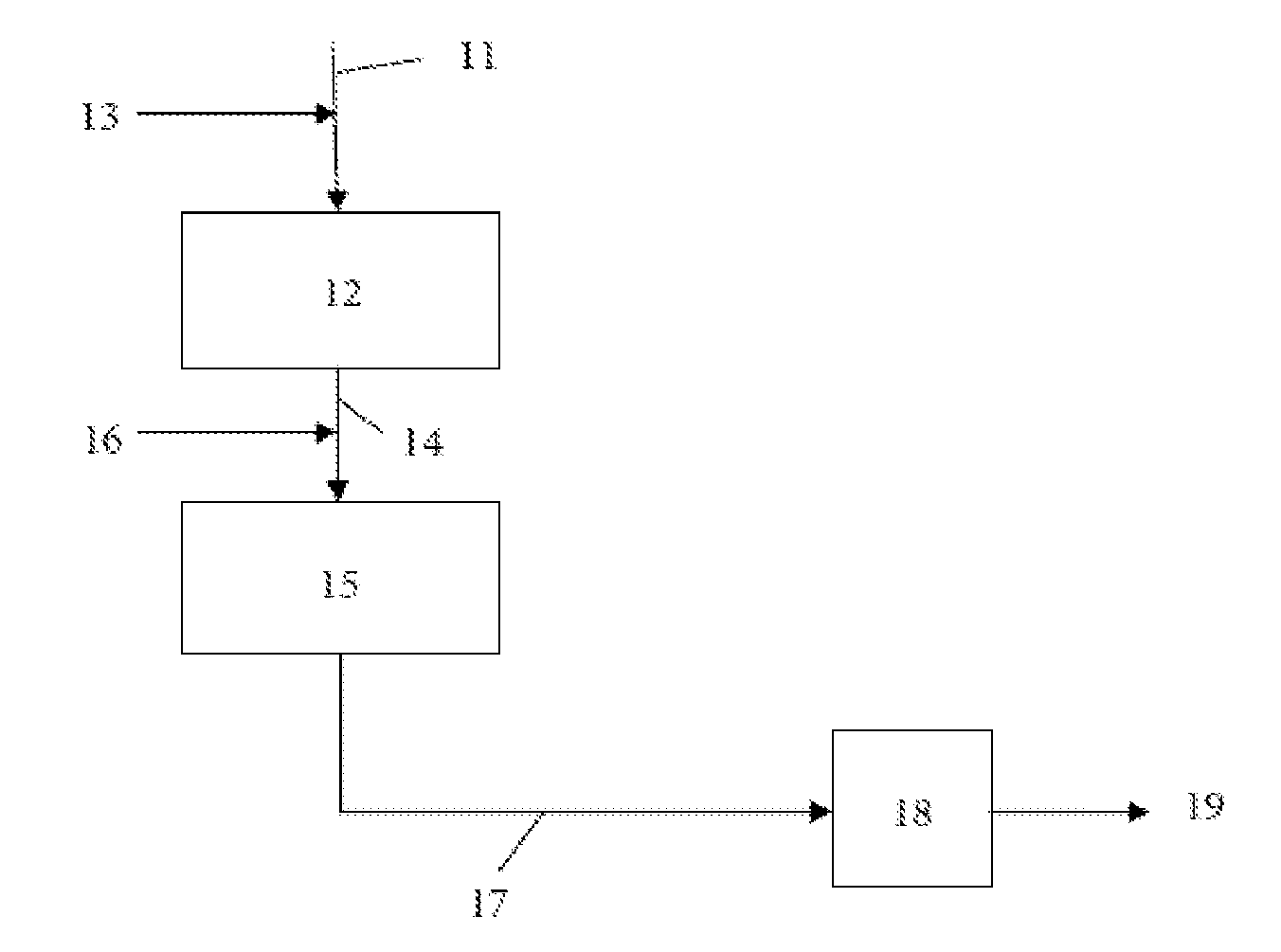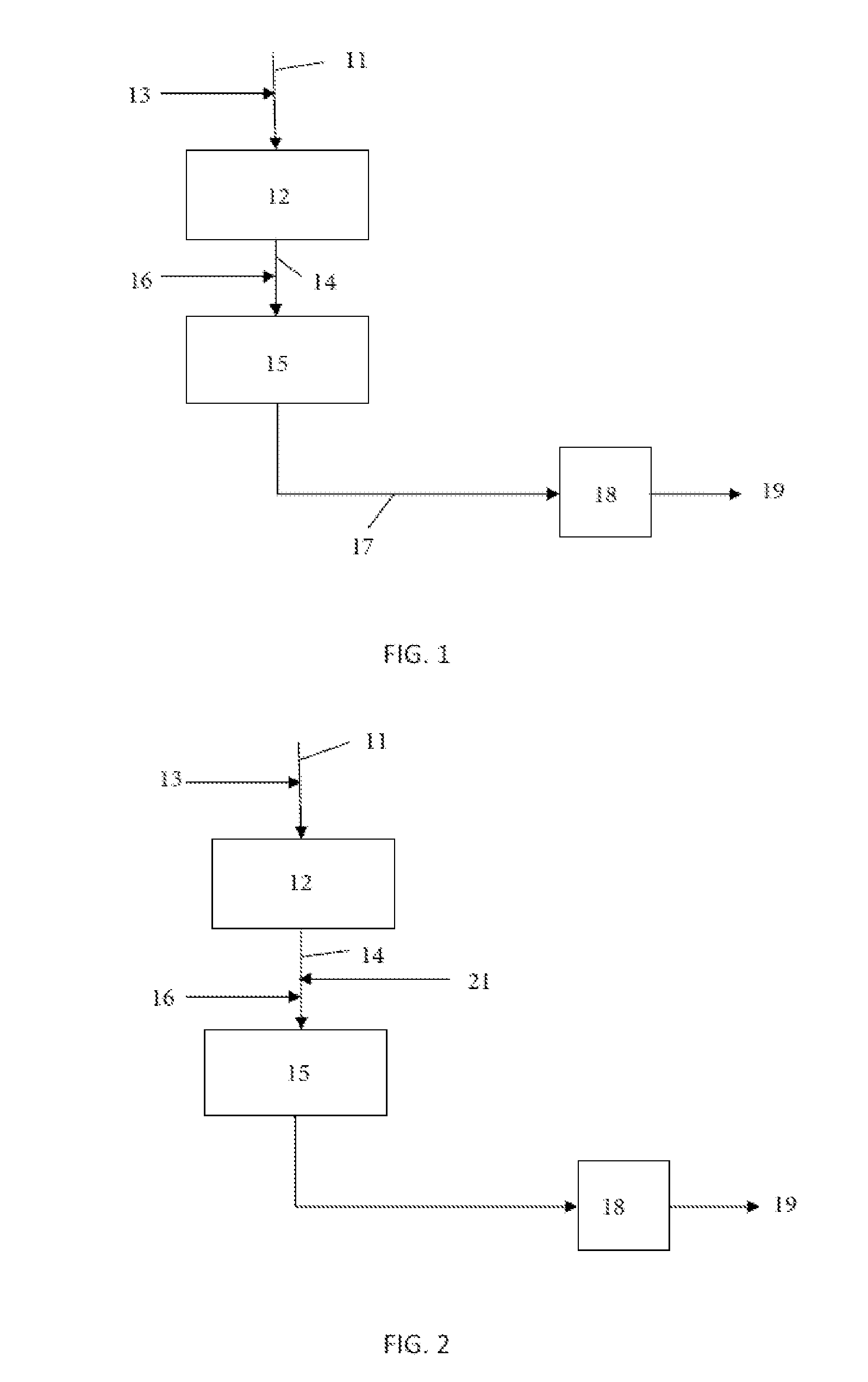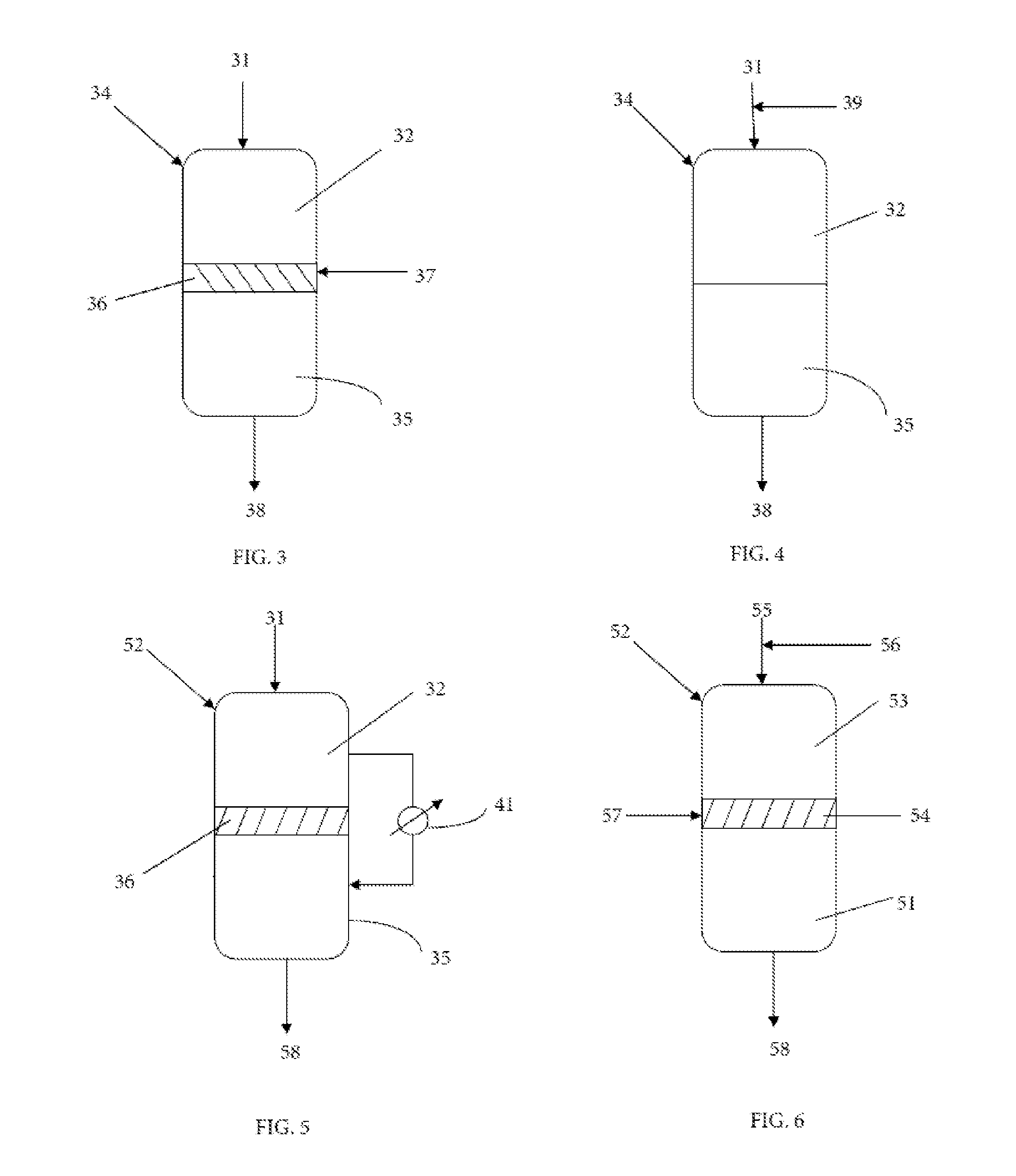Production of Para-Xylene
a production process and para-xylene technology, applied in the direction of organic chemistry, chemical apparatus and processes, hydrocarbon preparation catalysts, etc., can solve the problems of affecting the downstream para-xylene production process, inevitably affecting the alkylation product, so as to reduce the level of olefinic unsaturated contaminants
- Summary
- Abstract
- Description
- Claims
- Application Information
AI Technical Summary
Benefits of technology
Problems solved by technology
Method used
Image
Examples
Embodiment Construction
[0017]Described herein is a process for reducing the Bromine Index of an aromatic hydrocarbon feedstock also containing oxygenate impurities by contacting the feedstock, optionally in the presence of hydrogen, with a solid acid catalyst under conditions effective to reduce the level of olefinic unsaturated contaminants and oxygenate contaminants in the feedstock. The present treatment process is particularly intended for use with xylene-containing feedstocks since the resultant treated feedstock can then feed to a para-xylene production process employing a liquid phase isomerization catalyst without deleterious build-up of olefinic and oxygenate contaminants in the production loop. The stability of the feed treatment catalyst and / or the isomerization catalyst may be maintained by controlling the temperature of the relevant reaction, hydrogen addition or a combination thereof.
[0018]As used herein, Bromine Index is an indicator of the presence of olefinic bonds and is a measure of the...
PUM
| Property | Measurement | Unit |
|---|---|---|
| Bromine Index | aaaaa | aaaaa |
| temperature | aaaaa | aaaaa |
| pressure | aaaaa | aaaaa |
Abstract
Description
Claims
Application Information
 Login to View More
Login to View More - R&D
- Intellectual Property
- Life Sciences
- Materials
- Tech Scout
- Unparalleled Data Quality
- Higher Quality Content
- 60% Fewer Hallucinations
Browse by: Latest US Patents, China's latest patents, Technical Efficacy Thesaurus, Application Domain, Technology Topic, Popular Technical Reports.
© 2025 PatSnap. All rights reserved.Legal|Privacy policy|Modern Slavery Act Transparency Statement|Sitemap|About US| Contact US: help@patsnap.com



